Seven 9/11 Memorials to Visit Across the United States
These lesser-known monuments honor the lives lost in the terrorist attacks 20 years ago
/https://tf-cmsv2-smithsonianmag-media.s3.amazonaws.com/filer/5d/39/5d39270c-b272-4d75-ab6a-c1a1ac6abc25/postcards_memorial.jpg)
It’s been 20 years since September 11, and the tragedy is still imprinted in every corner of the United States. In the two decades since the reprehensible attacks by al-Qaeda terrorists on American soil, numerous memorials have been erected, including two of the most recognizable, the National September 11 Memorial and Museum in New York City, located on the former site of the World Trade Center, and The National 9/11 Pentagon Memorial in Washington, D.C. (the latter is currently closed due to the Covid-19 pandemic). Spread across the country, from California to New Jersey, these monuments to lives lost are worth visiting as we remember that tragic day.
Flight 93 National Memorial, Shanksville, Pennsylvania
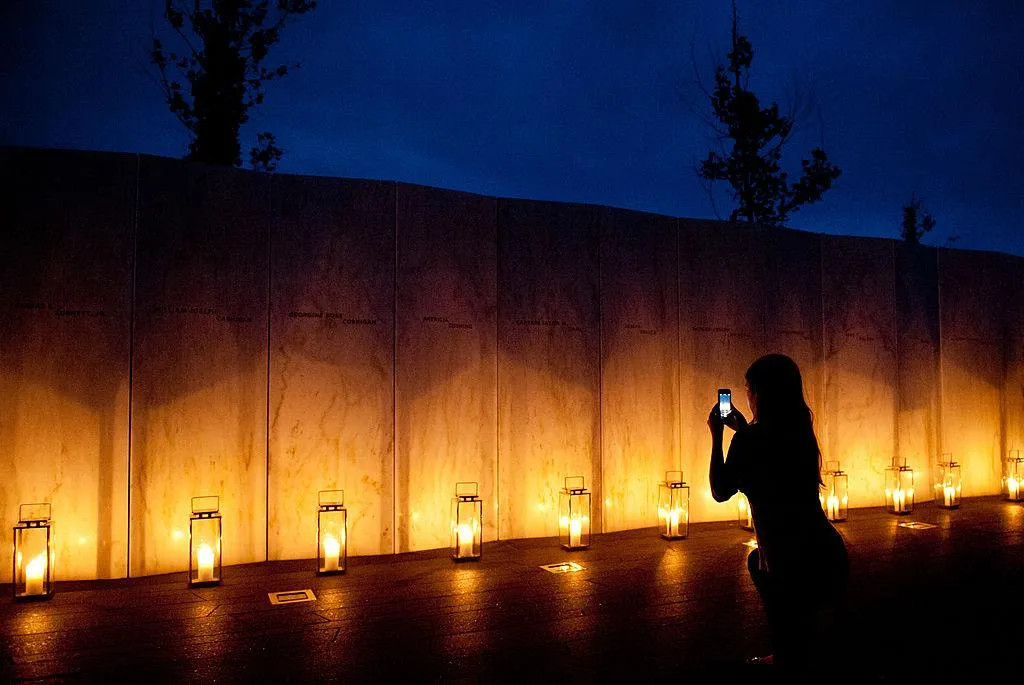
In the early hours of September 11, United Airlines Flight 93 departed Newark International Airport and traveled westbound toward San Francisco. Forty-six minutes after takeoff, a group of al-Qaeda terrorists hijacked the plane and made a u-turn over Ohio, pointing the Boeing 757-222 in the direction of Washington, D.C. However, their attempt was thwarted by members of the flight crew and passengers who fought back. Rather than relinquish control, the hijackers crashed the plane into a field in Somerset County, Pennsylvania, missing the U.S. Capitol, their target, by 175 miles. Today that same field serves as the home of the Flight 93 National Memorial. Maintained by the National Park Service, the memorial is a place of solitude comprised of a Visitor Center featuring an exhibition detailing the tragedy; the Tower of Voices, a 93-foot-tall structure that holds 40 windchimes to represent the 40 passengers and crew onboard the flight whose lives were lost; a wall of victims’ names; and a hemlock grove, marking the exact site of impact. The memorial site is also a stop along the 9/11 Trail, a 184-mile hike-and-bike path linking Washington, D.C. to New York City.
Reflect 9/11 Memorial Sculpture, Rosemead, California
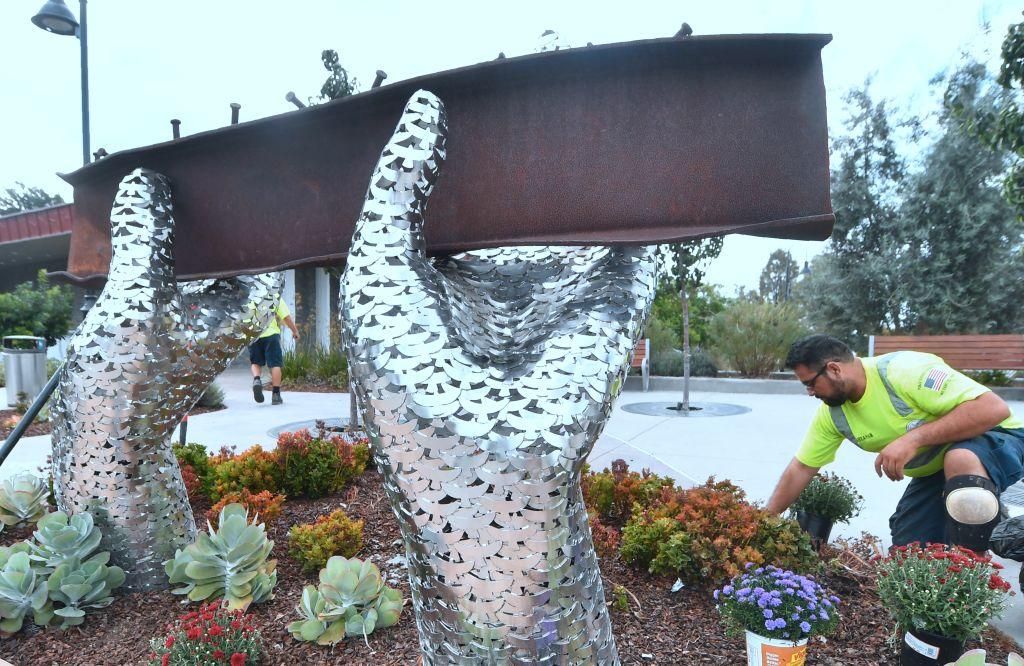
Many artists have created captivating artworks across the United States to commemorate September 11. One of them is Heath Satow, a Los Angeles-based sculptor who built Reflect, a large-scale metal structure comprised of two hands lifting a single 10-foot, 500-pound steel I-beam pulled from the World Trade Center rubble. To create the piece, which was dedicated on the 10th anniversary of the attacks, Satow welded together 3,000 four-and-a-half-inch stainless steel “bird-like” cutouts to form the hands, each piece representing one of the nearly 3,000 victims of the September 11 attacks. The memorial is located outside city hall in Rosemead, a city 10 miles east of Los Angeles. In a 2011 interview with The Los Angeles Times, Satow said he intentionally made the cutouts arbitrary, with many people comparing them to angels. “I didn’t want to be too specific. I want the viewer to bring their own ideas to it,” he explained.
To Struggle Against World Terrorism Sculpture, Bayonne, New Jersey
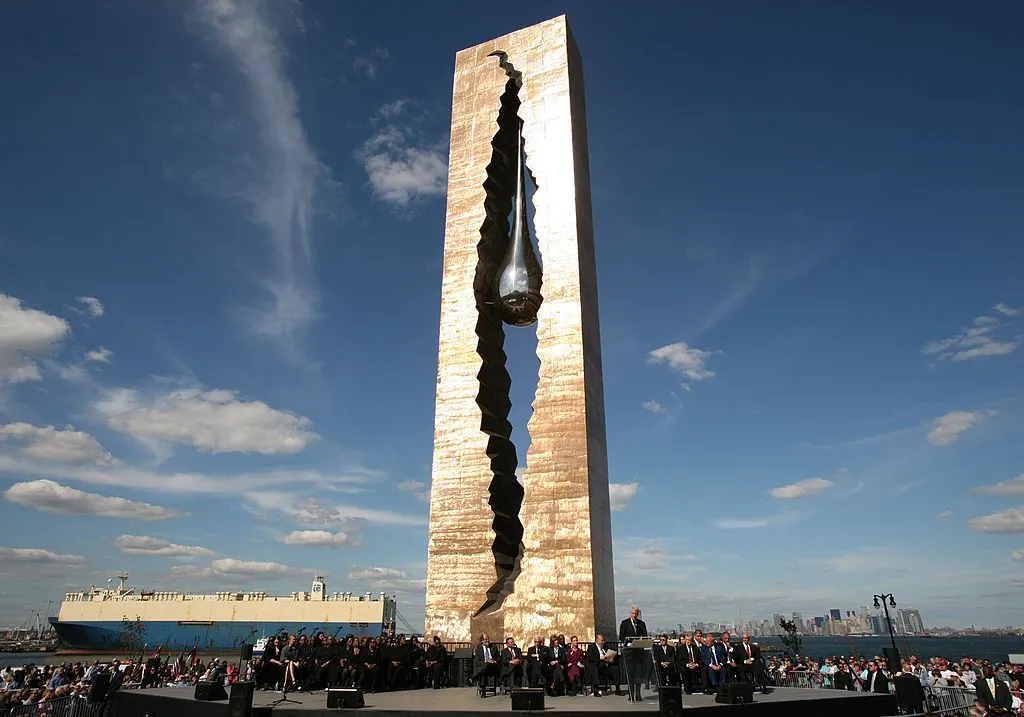
Moscow-based sculptor Zurab Tsereteli was a world away when he watched the news unfold of the United States being under attack. Several weeks later, he traveled to Ground Zero where the remains of the Twin Towers still smoldered. It was then that he solidified his desire to create a monument memorializing that deadly day. The result is To Struggle Against World Terrorism, a massive sculpture located on a man-made peninsula in Bayonne, New Jersey, a city with direct sightlines to Lower Manhattan. Dedicated in 2006, the ten-story structure, which is often called The Tear of Grief, served as an official gift from the Russian government to the United States. Made of bronze, the towering artwork is jaggedly split down the middle, revealing a single 40-foot nickel-plated teardrop. In a 2007 interview with The New Yorker, Tsereteli said he came up with the concept when he “saw the people gathered around the American Embassy [in Russia]. The tear that came out of my eye and fell, that gave me the idea for the monument.”
First Responders Memorial, Oak Lawn, Illinois

In 2011, Erik Blome was an artist-in-residence for the city of Oak Lawn, Illinois. During that time, he set up a temporary studio to create his First Responders Memorial. He built the memorial using four twisted 22-foot I-beams pulled from the wreckage of the Twin Towers and escorted from New York City to Oak Lawn by a team of local firefighters and police officers. Upon first glance, the structure is abstract in nature, but close up it contains intricate carvings of a police officer and two hands clasped together as well as a number of other motifs. “You see an event like that and it seems like it’s in some other place,” Blome told CBS Chicago in an interview at the memorial’s dedication ceremony. “And then when you see the beams you realize how real the event was. [September 11th] is all about togetherness, it’s all about coming together. I think people held hands that day. People who didn’t know each other held hands that day. When you say first responders, we were all, in a sense, first responders that day.”
Postcards, Staten Island, New York City
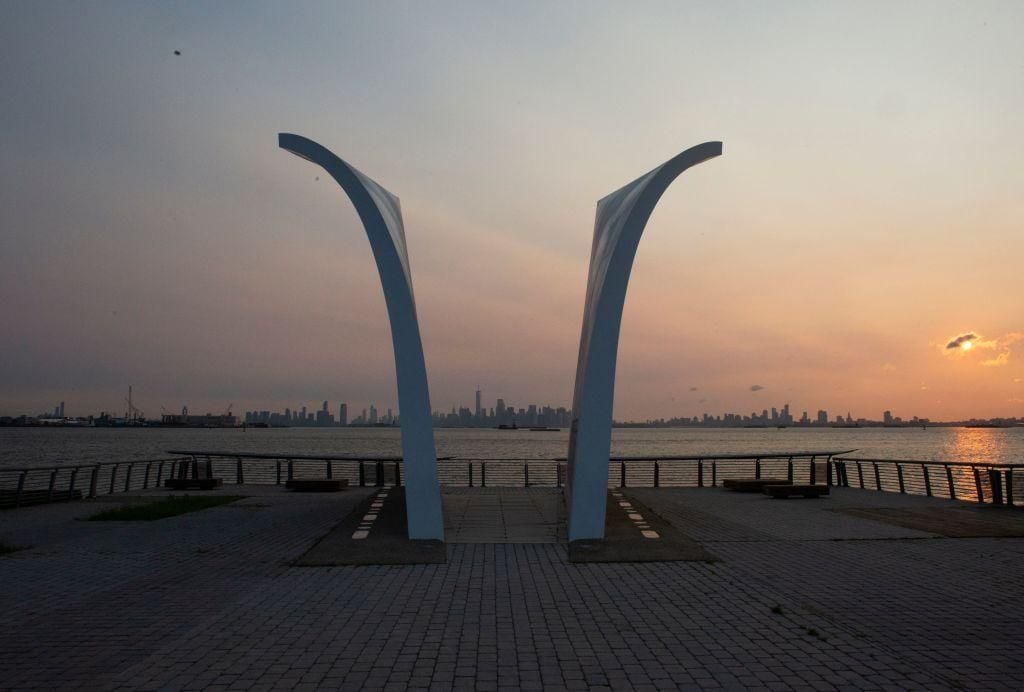
Of the nearly 3,000 people who perished on 9/11, 274 were residents of Staten Island, one of New York City’s five boroughs. This memorial designed by Masayuki Sono, a local architect, is dedicated to them. Inspired by the art of origami paper folding, the piece is comprised of two massive fiber glass structures that resemble folded postcards. Postcards points directly across the harbor toward the site of the former World Trade Center and features a series of 9-by-11-inch granite plaques carved into silhouettes, each honoring one of the Staten Island residents who died, plus the single Staten Islander who perished during the World Trade Center bombings on February 26, 1993. (Each plaque also contains the name, age and occupation of each victim.) The memorial, located on the North Shore Waterfront Esplanade, is accessible via a short walk from the Staten Island Ferry Terminal. Because the bodies of many of the victims were never recovered from the rubble, Postcards serves as a burial ground for those who died.
Memorial Labyrinth, Boston College, Chestnut Hill, Massachusetts
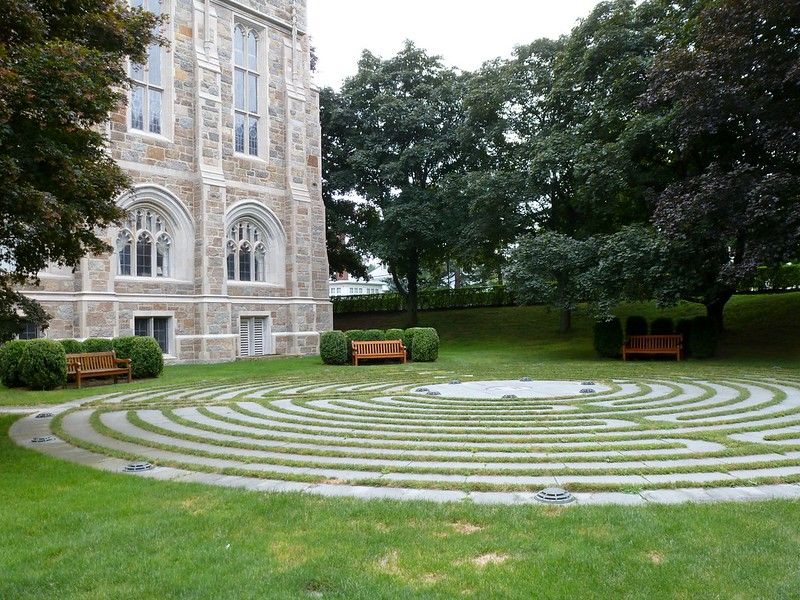
Labyrinths are popular places for anyone seeking silence and reflection, so it’s no surprise that there would be one built as a way to commemorate 9/11. Completed in 2003, the Memorial Labyrinth is tucked away on the Boston College campus in Chestnut Hill, Massachusetts, ten miles west of downtown Boston. Although not much is written about the labyrinth, the meandering cement maze snaking through the grass was inspired by a stone labyrinth that dates back to the 13th-century and is located inside Chartres Cathedral in France. Measuring 50 feet in diameter, Boston College’s meandering pathway contains the names of the 22 alumni who died during the attacks.
Moving Memories, Phoenix, Arizona
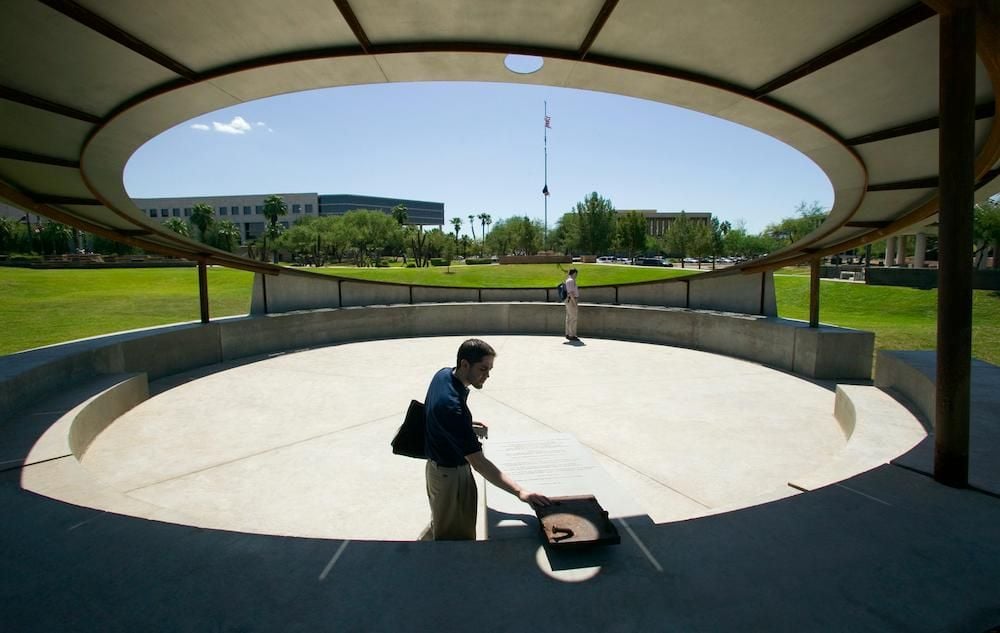
Utilizing Phoenix’s roughly 300 days of sunshine, the Moving Memories monument by architect Eddie Jones and coLAB Studio, a cooperative of artists and architects based in nearby Tempe, changes throughout the day. The circular structure, which is located in downtown Phoenix, is made up of a series of stainless-steel panels featuring 54 laser-cut inscriptions that cast shadows onto the concrete below. The inscriptions themselves serves as a timeline of the attacks and include details of the tragic events that occurred in New York City, Washington, D.C. and Pennsylvania, as well as important dates after September 11. Phrases include “10:28 a.m. WTC North Tower Collapses,” “Must Bomb Back” and “You Don't Win Battles of Terrorism with More Battles.” In a 2011 interview with NBC News, Shelley Cohn, a member of the Arizona 9/11 Commission, said, “A lot of what it represents is in symbols and metaphors. It was meant to be poetic, and for people to interpret it on their own.”
Planning Your Next Trip?
Explore great travel deals
Smithsonian magazine participates in affiliate link advertising programs. If you purchase an item through these links, we receive a commission.